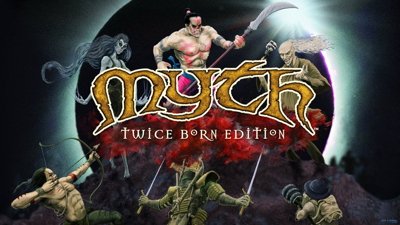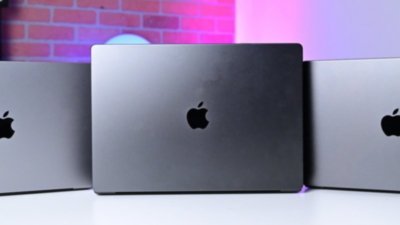AppleInsider began comparing Apple's future mobile processor options in January of this year, contrasting reports that Apple would adopt Intel's Silverthorne x86-compatible mobile processors (now referred to under Intel's Atom brand) with details on ARM, the mobile processors Apple originally codeveloped with Acorn in the early 90s for use in the Newton MessagePad, and later began using in the iPod in 2001 and the iPhone in 2007.
In April, AppleInsider reported that "the next generation of iPhone appears set to claim exclusive access to advanced graphics core and video decoding technology, thanks to a secret licensing deal between Apple, mobile graphics leader Imagination Technologies, and Samsung, the iPhone's ARM 'system on a chip' manufacturer."
Imagination had reported a deal with Samsung for a "manufacturing license" related "to certain POWERVR SGX graphics and VXD video IP cores," an arrangement that would allow Samsung to build but not actually design the chips being manufactured. That role would be exclusive to the then anonymous "international electronics systems company" which Imagination said had licensed its "next generation graphics and video IP cores [...] under a multi-use licensing agreement."
Imagination's press release said "the SoCs [system on a chip] to be developed under this license agreement will be produced for this new partner by Imagination’s existing semiconductor partners and/or new chip manufacturing partners." AppleInsider identified Apple as that company, based on exclusive reports from sources within the SoC industry.
In September, AppleInsider again linked Apple in a new report from Imagination regarding that still unnamed "international electronic systems company" which it reported had acquired a multi-year, multi-IP, multi-use licence agreement for its current and future portfolio of PowerVR mobile graphics components, including the next generation PowerVR SGX VXD video IP cores. Those parts will introduce OpenGL ES 2.0 support, along with a Universal Scalable Shader Engine that will provide mobile devices with highly efficient, shader-based 3D graphics. The new core is not only backwards compatible with code developed for MBX (used in the current iPhone and iPod touch), but will also run existing code with better performance and efficiency.
Recognizing Apple as the mysterious "international electronics systems company" also helped explain why the company had acquired PA Semi, the fabless chip design firm launched by Dan Dobberpuhl in 2003. Steve Jobs later revealed that the PA Semi acquisition was indeed related to building chips for the company's iPod and iPhone mobile devices.
Apple's purchase of 8 million shares of the PowerVR developer, combined with Imagination's announcement today, concludes that Apple is indeed "a licensee of Imagination’s technology" and finally puts to rest any question that the iPhone maker has lined up exclusive graphics technology required to design customized, next generation mobile SoC chips that will be manufactured by its existing partners, most likely Samsung.
The move to build original mobile SoC devices with advanced GPU cores likely also fits into Apple's Mac OS X Snow Leopard strategy related to OpenCL and Grand Central, enabling the company to push its efforts in parallel processing and GPU acceleration from the Mac desktop into its mobile devices, enabling all sorts of innovative applications for high performance, mobile devices that other companies can't match with commodity parts and generic software platforms such as Android, Windows Mobile, and Symbian.
Additional Reading
Apple suspected in new deal for PowerVR graphics in multi-touch devices
Apple's bionic ARM to muscle advanced gaming graphics into iPhones
 Prince McLean
Prince McLean






-m.jpg)






 Malcolm Owen
Malcolm Owen
 Andrew Orr
Andrew Orr

 William Gallagher
William Gallagher

 Chip Loder
Chip Loder
 Marko Zivkovic
Marko Zivkovic



-m.jpg)




28 Comments
This will bring about so many possibilities. It could make the iPhone so much faster and be able to handle a lot more processor intensive tasks (such as background notifications).
This will bring about so many possibilities. It could make the iPhone so much faster and be able to handle a lot more processor intensive tasks (such as background notifications).
Will it bring copy-paste ?
sooooo with PA apple can design ,and then let samsung build these sys on chips, then if so they are not therefore limited to modification of a established design, it can be there propriatary design--exclusive to apple?
what about apple making/ designing their own chips for macs?? or are they staying intel.
i'm looking at ways that apple can furthur differentiate themselves, and also prevent "mac cloners" from doing the dirty with mac os.
what does this relationship allow and not allow apple to do?
and don't say "copy and paste" (i'm still pushing for voice dialing)
Will it bring copy-paste ?
No, Steve knows all.
And yes, that WAS a joke.
This technology is going to allow Apple to push the bounds in the mobile gaming platform. I could even imagine it eventually migrating to an AppleTV-like device which was designed to run iPhone games, but I think Apple's going to continue to focus on the handheld.
If they can get the costs down on the iPod Touch every kid will want one next Christmas.